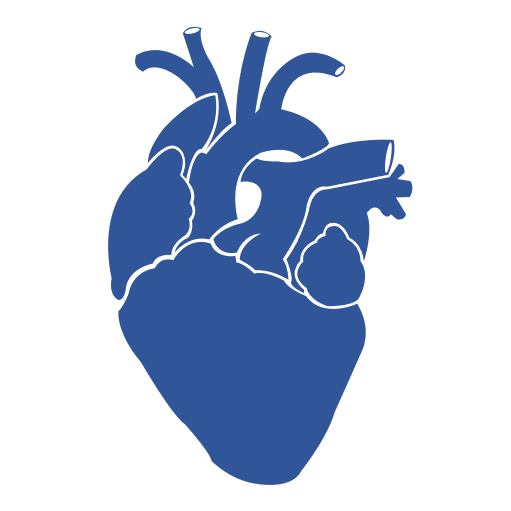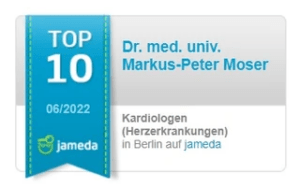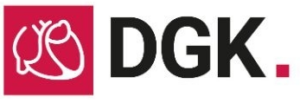How do I recognise a Heart Attack?
A heart attack is an acute life-threatening situation. It is therefore even more important to correctly assess warning signals that indicate a heart attack and to act accordingly.
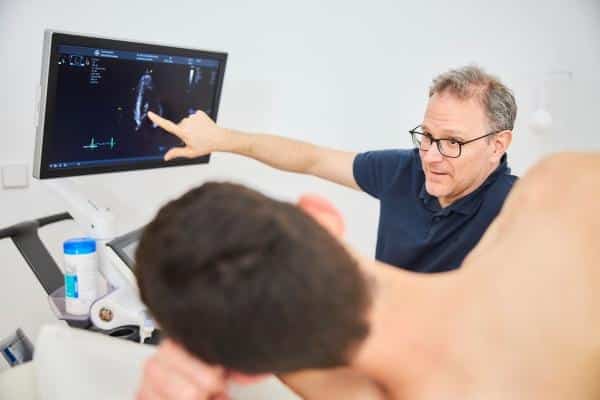
Very clear symptoms of a heart attack
When a heart attack occurs, the heart muscle is no longer supplied with sufficient oxygen due to an acute blockage of at least one of the three coronary vessels. This leads to the destruction (cell death) of the heart muscle cells in this area – dead cells can therefore no longer be replaced. This leads to pronounced symptoms, e.g.
- massive, unprecedented pain in the chest (this is also called the annihilation pain). However, this pain can also radiate into the neck, left arm, back or upper abdomen.
- In addition, there is nausea, vomiting, cold sweats, shortness of breath, anxiety, and panic.
In very severe cases, there is even sudden cardiac death.
Typical, “atypical” heart attack symptoms and special patient groups
There are different symptoms that can indicate a heart attack. These can occur individually and depend on various factors, such as previous illnesses, age or gender. Women show different symptoms than men, this is now known and is being further researched in gender medicine. However, women in Germany still have a higher mortality rate from heart attacks than men [1], which seems to be due to a lack of knowledge about the symptoms of all involved. Good information can prevent disease![2]
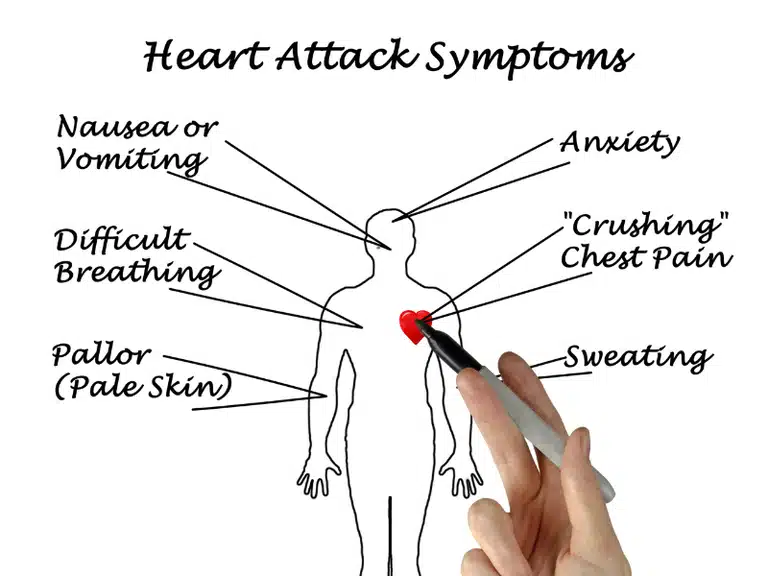
Men
Men often experience (for us) the classic heart attack symptoms. This means that you suddenly feel very strong chest pain combined with a distinct feeling of tightness, often for several minutes. This pain can also spread to other parts of the body.
radiate, such as the arms, back or neck. Usually, this is pain like you have never experienced before. It is crucial to call 911 immediately so that valuable life-saving time is not wasted.
Women
Women usually have “different symptoms” compared to men, such as upper abdominal discomfort, back pain, fatigue, or flu-like symptoms. Nausea, sweating and shortness of breath can also be among the symptoms that indicate a heart attack in women. In any case, in the case of these symptoms, especially if they are of an unprecedented character and lead to a very high level of anxiety, the emergency doctor should be called immediately.
Older people
In older people, the heart attack symptoms can often be attenuated and atypical. In this particularly vulnerable group of patients, for example, shortness of breath as well as pain in the left arm are in the foreground. These symptoms are often not recognised correctly because they are misinterpreted due to previous illnesses.
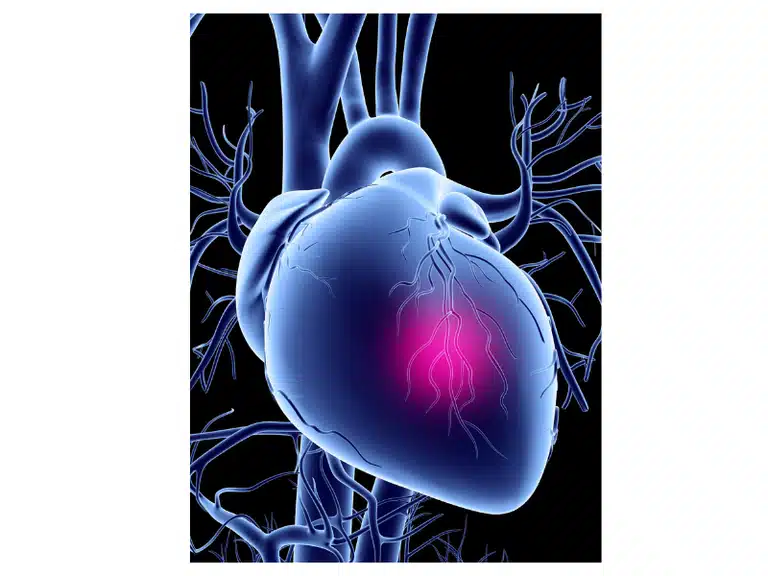
People with increased risk of heart attack
Diabetics not only have a significantly increased risk of cardiovascular diseases, but due to their polyneuropathy (diseases of the nervous system) they often feel the chest pain less strongly or even not at all. In some cases, a heart attack can go unnoticed at first; this is also called a silent heart attack. In such cases, attention should be paid to other symptoms such as shortness of breath and anxiety.
The individual risk for a heart attack results from the sum of the individual risk factors, such as high blood pressure, smoking, diabetes, obesity, lack of exercise, elevated blood lipids and a family history (coronary heart disease). Psychological factors play a major role here: it is a proven fact that psychological stress, depression and anxiety massively increase the risk of heart disease.[3][4] Conversely, however, a heart attack can also cause depression or anxiety disorders afterwards, which is something that must be taken into account in follow-up care in order to improve recovery.
For patients at risk, primary prevention is the best option to avoid a so-called cardiac event (heart attack, stroke, etc.). A cardiac check-up allows us to determine the health status quo and further measures (smoking cessation, weight reduction, stress reduction, drug therapy for blood pressure, etc.) are derived from this. It cannot be emphasised often enough how important it is to make one’s own commitment to lead a healthier lifestyle. The doctor is primarily there as a supportive companion, counsellor and pastoral caregiver.[5]
What to do if you notice signs of a heart attack
Call an emergency doctor immediately. The doctor can use an ECG to rule out a major heart attack or, if the suspicion is confirmed, take all the necessary steps to minimise irreparable damage to the heart muscle.
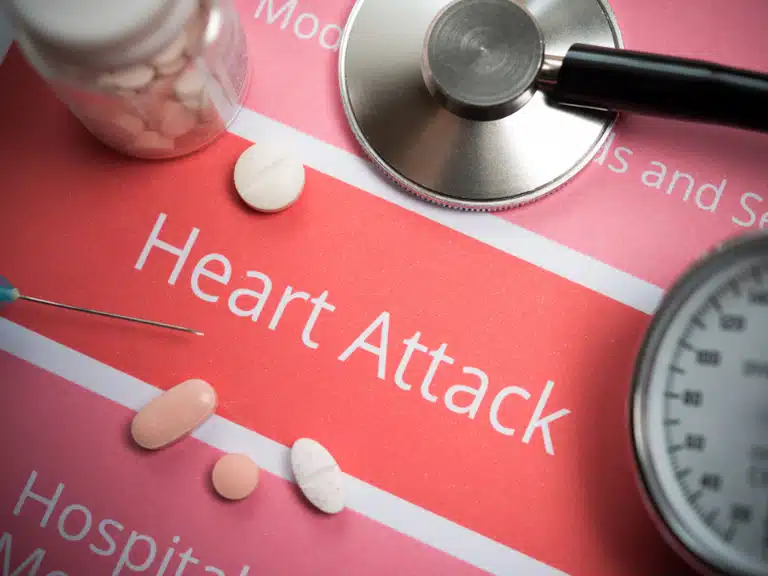
References
[1] Kuehnemund, L., Koeppe, J., Feld, J., Wiederhold, A., Illner, J., Makowski, L. Gerss, J., Reinecke, H., Freisinger, E. (2020). Gender disparities in management and treatment in acute myocardial infarction – a German nationwide real-life analysis. European Heart Journal, Volume 41
[2] Deutsches Ärzteblatt (ed.). (2020). Gender differences in cardiovascular disease often unnoticed.Accessed 05 June 2022 at:https://www.aerzteblatt.de/nachrichten/118425/Geschlechtsspezifische-Unterschiede-bei-Herz-Kreislauf-Erkrankungen-haeufig-unbeachtet
[3][4] Ladwig, K.-H., Lukaschek, K. & Kuhn, B. (2015). Psychosocial risk factors of acute myocardial infarction. Current Cardiology 2015; 4(06), 362-265.
[5] Rattner, J. & Danzer, G. (1997). Medical anthropology-approaches to a personal healing science. Frankfurt am Main: Fischer Verlag.
